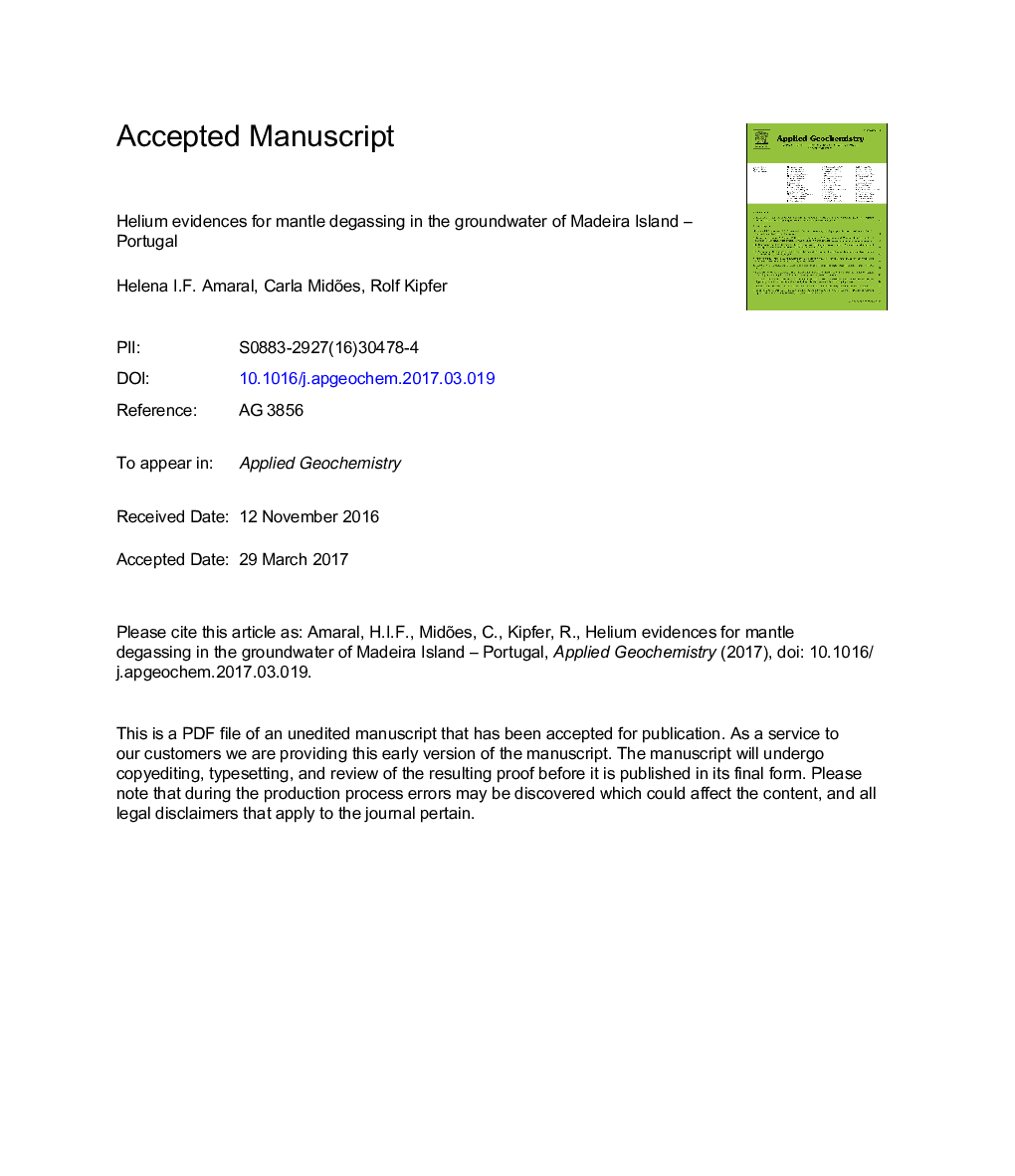| Article ID | Journal | Published Year | Pages | File Type |
|---|---|---|---|---|
| 5752461 | Applied Geochemistry | 2017 | 31 Pages |
Abstract
Groundwater is the main supply of drinking water in Madeira Is., and the hydrogeology of the island has been well characterized in previous studies. In this study, groundwater was generically divided into 'cold' waters (<20 °C, near the coast) and 'warm' waters (20-25 °C, central part of the island). This division was based on field temperature, water chemistry and stable isotopic composition. Four 'hot' waters (23-25 °C) showed partly distinct characteristics. A bubbling spring was also sampled. Very low tritium values indicate groundwater recharged recently and/or mix with free-tritium waters. Groundwater is fed by rain recharged during autumn as indicated by δ18O and δ2H signatures. During infiltration, the waters dissolved soil CO2 that according to the back-calculated δ13C-CO2 compositions corresponds mainly to CO2 of biogenic origin. Nonetheless, a mantle CO2 component cannot be excluded from samples from the inner part of the island. The noblegas helium was the sole tracer indicating a deep gas contribution to the groundwater. A strong mantle signal was detected in the 'hot' and bubbling waters, as indicated by their He-Ra values of 8 (being Ra the atmospheric 3He/4He ratio), typical of the MORB. Thus, even if the last volcanic eruption occurred ca. 0,006 Ma, degassing of the upper-mantle was detected in the shallow cold waters of Madeira. The deep gas ascends without heat transport, through dikes and faults that cross, mainly, the central part of the island.
Related Topics
Physical Sciences and Engineering
Earth and Planetary Sciences
Geochemistry and Petrology
Authors
Helena I.F. Amaral, Carla Midões, Rolf Kipfer,
